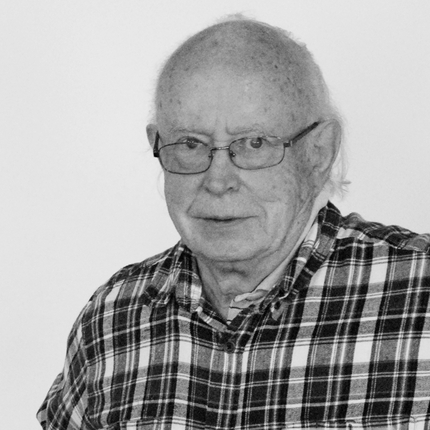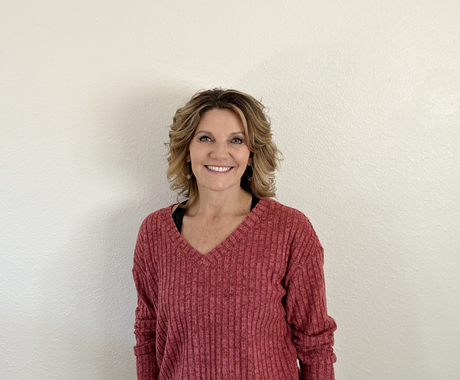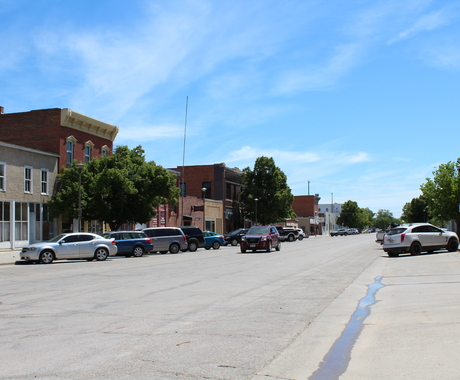By Paul Olson, retired member of the board of Center for Rural Affairs
Note: The Center for Rural Affairs celebrates 50 years of organization on Sept. 5, 2023. To commemorate this milestone, we welcome your stories of involvement with the Center. The following is from Paul Olson, who served on our board of directors from 1978 to 2019. Read more about Paul in a blog from 2020 when we honored him with our Seventh Generation Award.
My memories of the first days of the Center for Rural Affairs are less detailed than they should be. I am over 90 years old.
In 1973, I knew nothing of the Goldenrod Hills Community Action Agency, Marty Strange, or Don Ralston. I knew Bert Evans, the agricultural economist who lived in perpetual rebellion against the Agricultural Economics Department at the University of Nebraska-Lincoln. I may have heard of the Center from him. In any case, I knew that rural affairs needed attention.
As I was from Wahoo and my first wife, Betty (deceased 1999), and I were partners in a Kansas farm (in her family since 1869), we knew rural. My childhood came on a northern Wisconsin farm, and, after my family’s 1944 move back to Nebraska, I was a teenage farmworker. In the 70s, at the urging of friends in the College of Agriculture, I devised a course, “The Literature of Agriculture,” writing about farming from Greco-Roman times to Willa Cather and Wendell Berry. As a 70s professor invested in rural things, I knew things were turning sour out there.
My first memory of direct work with the Center came with planning for the '70s Prairie Project with Doane College, segments of the university, and the Center. I got to know the Center’s leaders somewhat: I remember the project’s small group sessions on issues like rural environmental degradation and depopulation, technological destruction in rural culture, etc. At Betty’s urging, I heard Wendell Berry’s Prairie Project analysis (she said he “spoke with real moral authority”) of a radically polluted, depopulated rural countryside. I heard a person who knew the Club of Rome’s research on the limits of industrialization as it affects the environment (though initially they did not recognize climate change). I came to realize that the Center combined the best of policy analysis with active local work, and I invested myself in it.
Thereafter, I attended Center for Rural Affairs’ 1970s annual meetings—the blizzards each year so strong that one could not determine, amid the blowing snow, where the next discussion group might be held—all the meeting buildings in Walthill being wind-and-snow obliterated. The discussions of wind and solar power, of the making of handmade windmills in pioneer times, of local vegetable growing and local direct marketing of crops, and of the threats of corporations buying up Nebraska farmland all came from rural folks. The wind and snow were terrible, but the talk was great.
Meanwhile, at the University of Nebraska, I participated in a luncheon group that despised the Center, a group including some members of the College of Business and other parts of the university. Their contempt for the Center and especially for Marty and Don was palpable. They were dangerous to progress, they would wreck the Nebraska economy, they were Luddites, everything that could be done should be done to get rid of the Center. At that time, I was founding and organizing UNL’s Center For Great Plains Studies, and I strongly believed that we had a mission to protect the cultures and communities of the rural Great Plains—Native American communities, Hispanic communities, and the farming communities coming under assault. The Center seemed to me to speak truth to that issue.
When I was asked, at the end of my directorship of the Center for Great Plains Studies, to join the Center Board, I did so with trepidation because I thought the university might fire me. I had a wife and kids about to enter college. I even went to my chair and asked for permission to join the Board (I am basically a coward). He graciously said, “Of course, you have full freedom of intellectual expression.”
When I did come to the board, its founders and early members were still around: not only Don and Marty but early board members Fern Norris, Pat Rogers, Art May, Alan Heine, Vince Rossiter, Bert Evans, and Bob Steffen—a wonderful group, more a think tank than a board. Marty Strange, Bert Evans, and Vince Rossiter, a Hartington banker, would launch into abstruse discussions of rural economics—discussions sophisticated beyond my comprehension and vigorous as a tornado. Bob Steffen and other members spoke constantly of abstruse forms of organic agriculture—biodynamic farming, integrated organic agriculture, rotational grazing, and varieties of planning for agricultural systems to reduce pesticides and herbicides—forms whose details were not always easy for a city slicker to understand.
But I knew the anxiety out there. In my literature of agriculture classes, farm kids feared the growth of corporate farms. They talked of the decline of their towns, of declining farm satisfaction, of rural poverty. The Center’s response came with Initiative 300 constitutional amendment that forbade corporate farming, and we all wrote letters and carried petitions.
I had my own agenda also. I remember pushing for Center work on the survival of small towns. Marty later secured funding for one of the first Grameen style banks in the country for Nebraska rural small business development. The farm crisis came: the Center had to help find emergency support to farmers being destroyed by debt and lending policies; to counter the suicidal tendencies of desperate farmers; to answer centralization, industrialization, and globalization in agriculture and rural America. Initiative 300 passed; the Grameen bank style work succeeded, and the much that was valuable in traditional Nebraska rural culture continued. We needed a hundred Center for Rural Affairs in rural America.
I was not an active farmer or an active small town businessperson. I had to consider what I could contribute so I pushed for our developing an audited overhead to keep the administration of the Center strong; with Connie Bowen for strong medical and retirement plans for the staff; for the creation of the foundation, the Granary, to keep the Center alive.
I did not do enough. Rural America is still in trouble. However, I am permanently grateful to the Center staff and board for letting me in. The rural/urban tension is our most important problem, and no other institution of which I have knowledge has the policy and local action tools to deal with it. Fifty years of good work.





